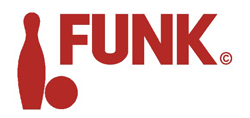Whether starting a bowling business from the ground up or managing an existing one, there are a number of costs to consider. Obviously new bowling centers will have a variety of start-up costs, but after the lanes are up and running, the biggest ongoing expense for bowling proprietors is most likely going to be equipment maintenance.
Bowling equipment maintenance costs can impact your bottom line in two primary ways:
- On-site, full-time mechanic for pinsetters, ball returns, etc.
- Lane downtime as a result of breakdowns
The biggest contributor of these maintenance costs is the traditional free-fall pinsetter. For most free-fall pinsetters there can be thousands of moving parts, any of which can malfunction and cause a breakdown. This is why many bowling alleys have an on-site, full-time mechanic to make sure the lanes stay up and running.
At the same time, finding an experienced free-fall mechanic isn’t easy. There are fewer experienced free-fall mechanics in the US than in previous decades. As a result, with higher demand and lower supply of mechanics, salaries have gone up as well.
Even with a professional on-hand, some of the breakdowns can be much more costly than others and may require a very timely and complicated repair process or might even require a complete replacement. The more complex the situation, the longer the lane will be offline and, therefore, not generating revenue for your business.
To put some numbers to it, Bowling.com offers some figures as to the financial impact each lane can potentially have on a bowling business. The article says:
“A bowling center averaging 11,000 games per year generates about $36,750 per lane annually.”
All of this is to say that down lanes, can mean fewer games per year, especially if lanes are down during the busy season. Add on top of that the fixed expense of having a full-time, professional mechanic and your profitability diminishes.
Given that the free-fall pinsetter results in so much required maintenance and the associated costs, many bowling businesses are turning to the string pinsetter. Widely used in Europe, the string pinsetter eliminates the need for a full-time mechanic and the majority of the repairs and maintenance can be conducted by any of your existing staff.
In addition to minimizing maintenance costs, the reliability of the string pinsetter helps to keep your lanes up and running for a better customer experience. Today’s growing entertainment bowler is less concerned about the type of pinsetter you use. They simply want to have a great experience with friends and family.
String pinsetters have a significantly fewer amount of moving parts, and therefore are easier to maintain and repair. With significantly less maintenance costs and with a better customer experience, string pinsetters are transforming the bowling center model and bringing more profitability to bowling lanes around the world.



0 Comments